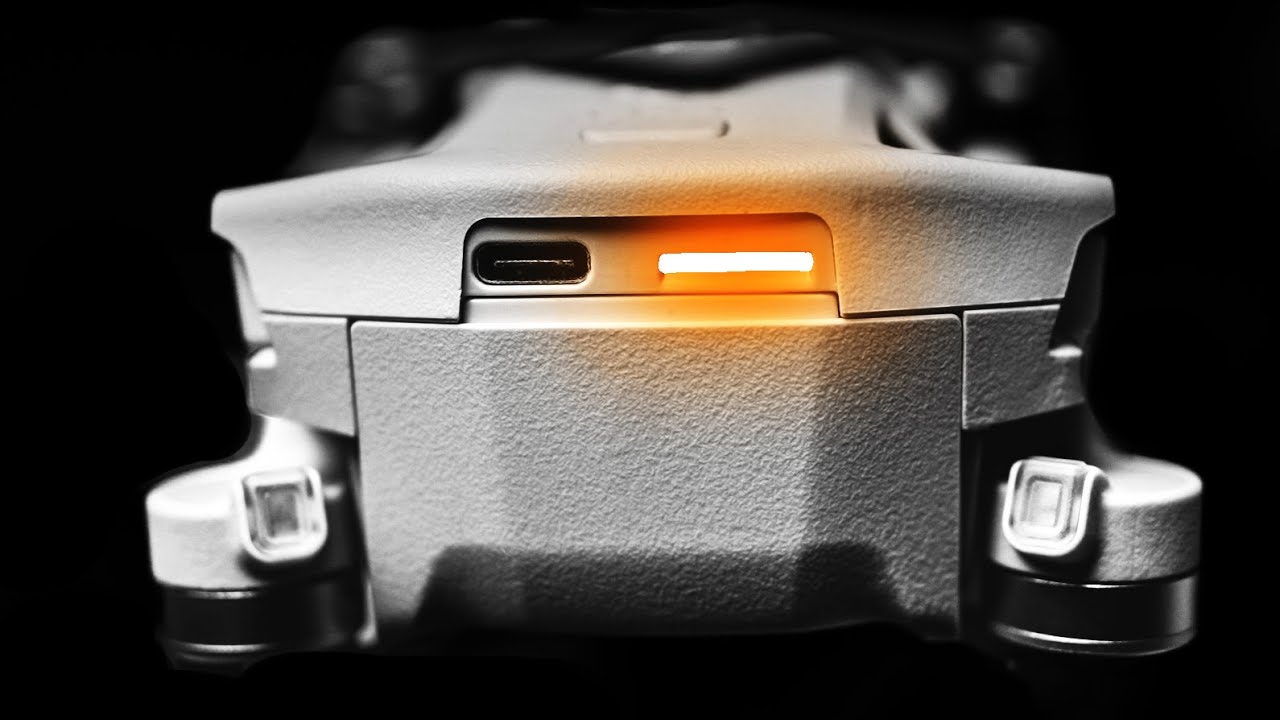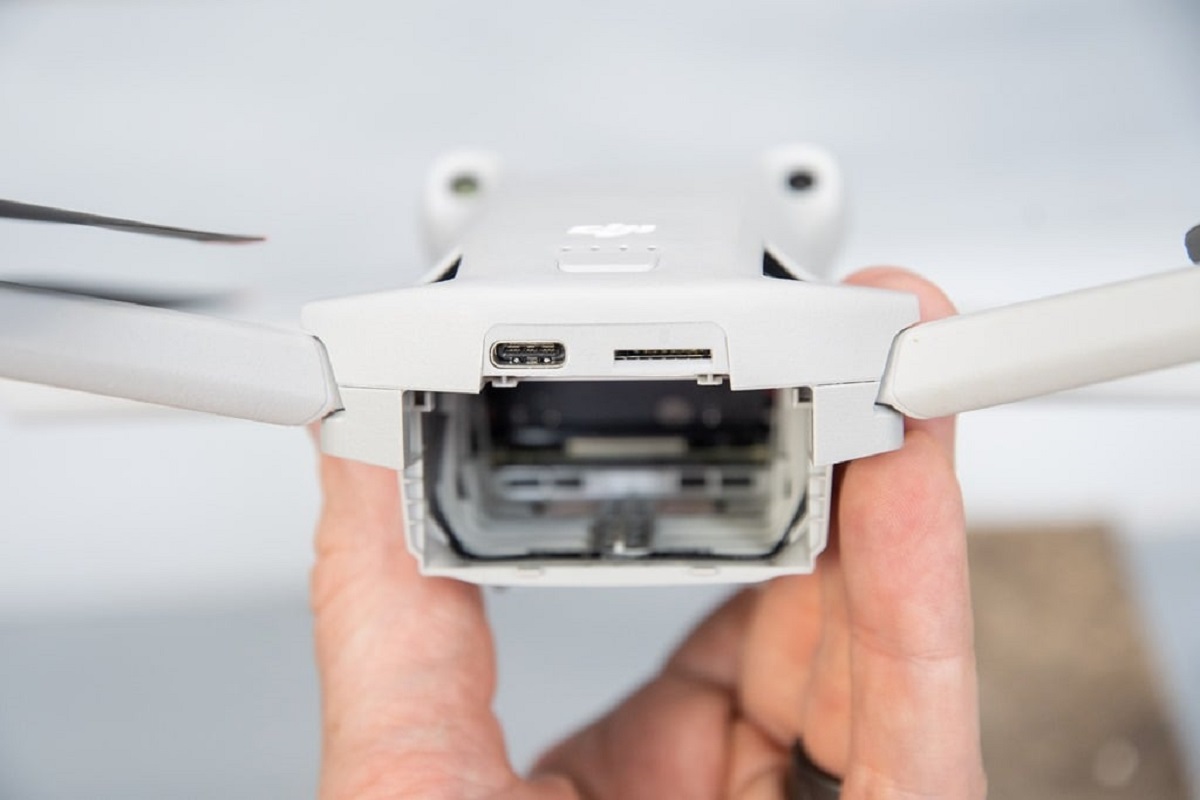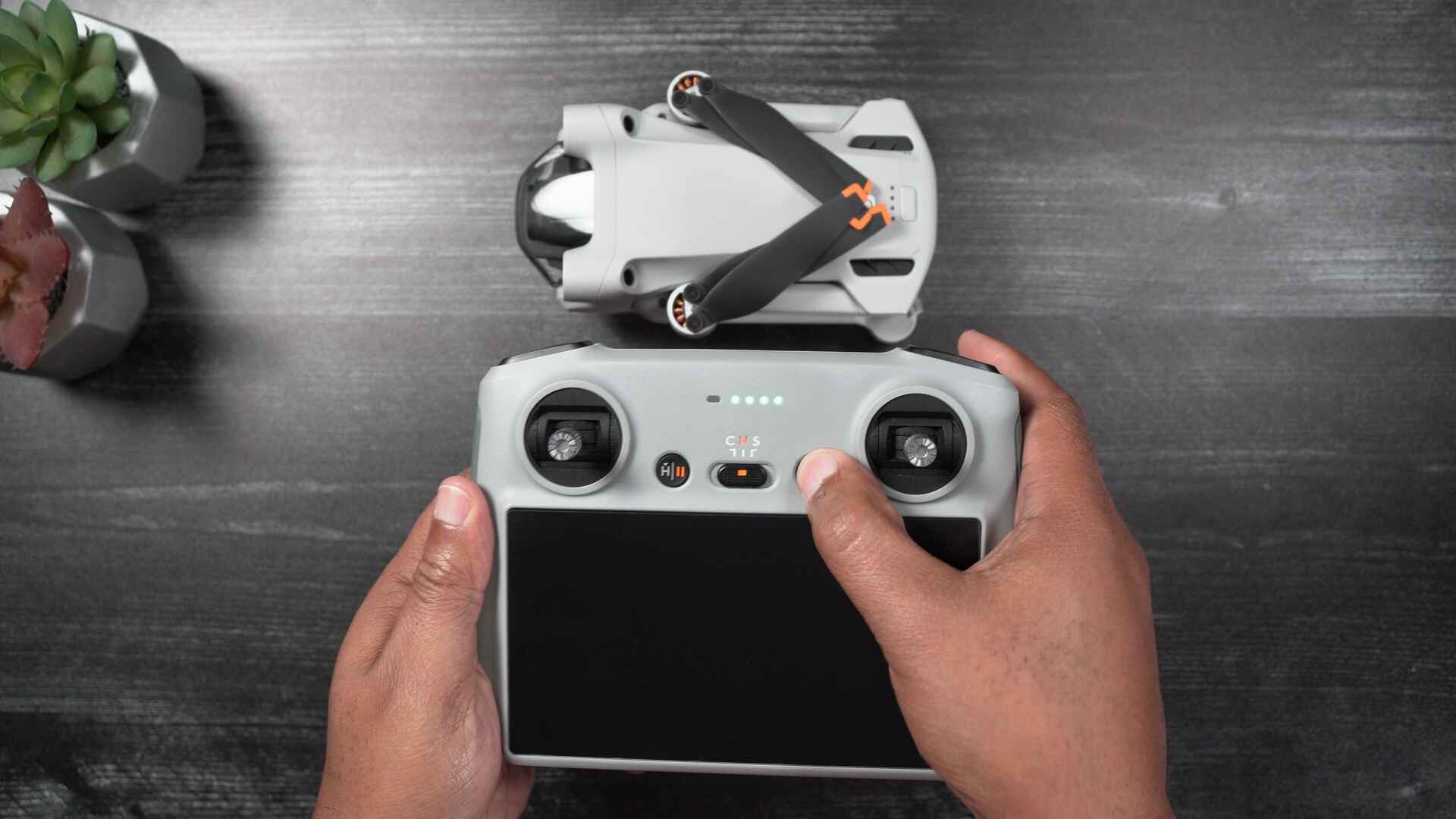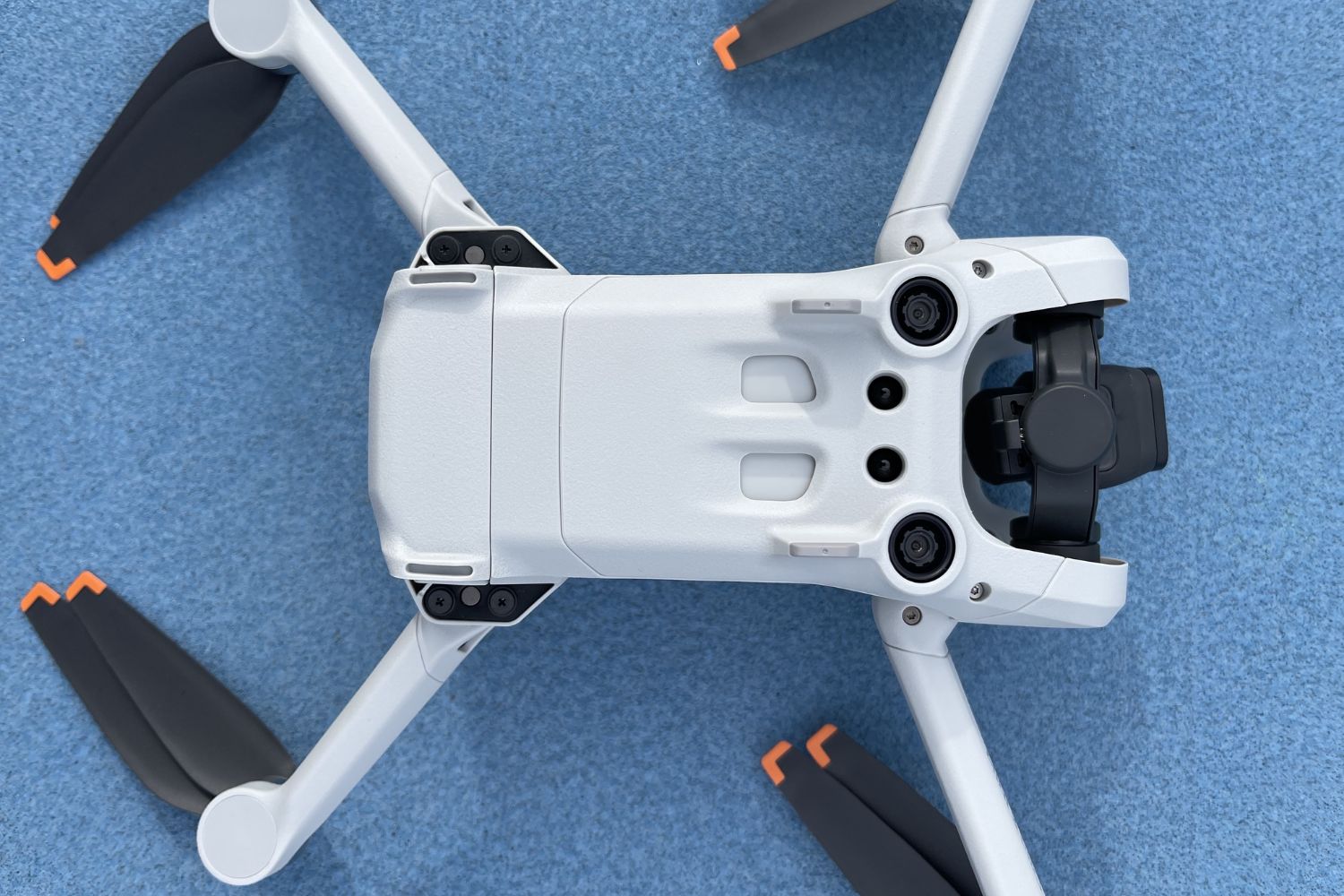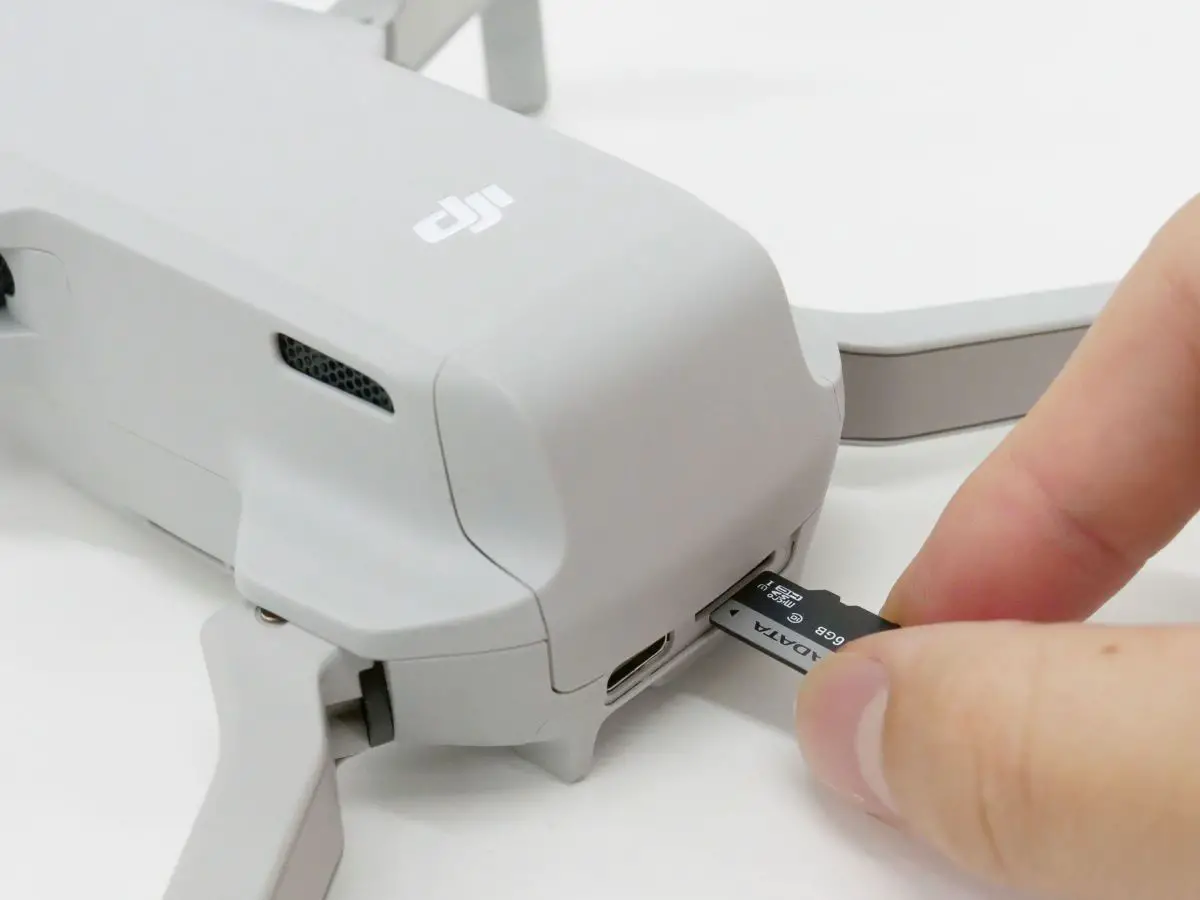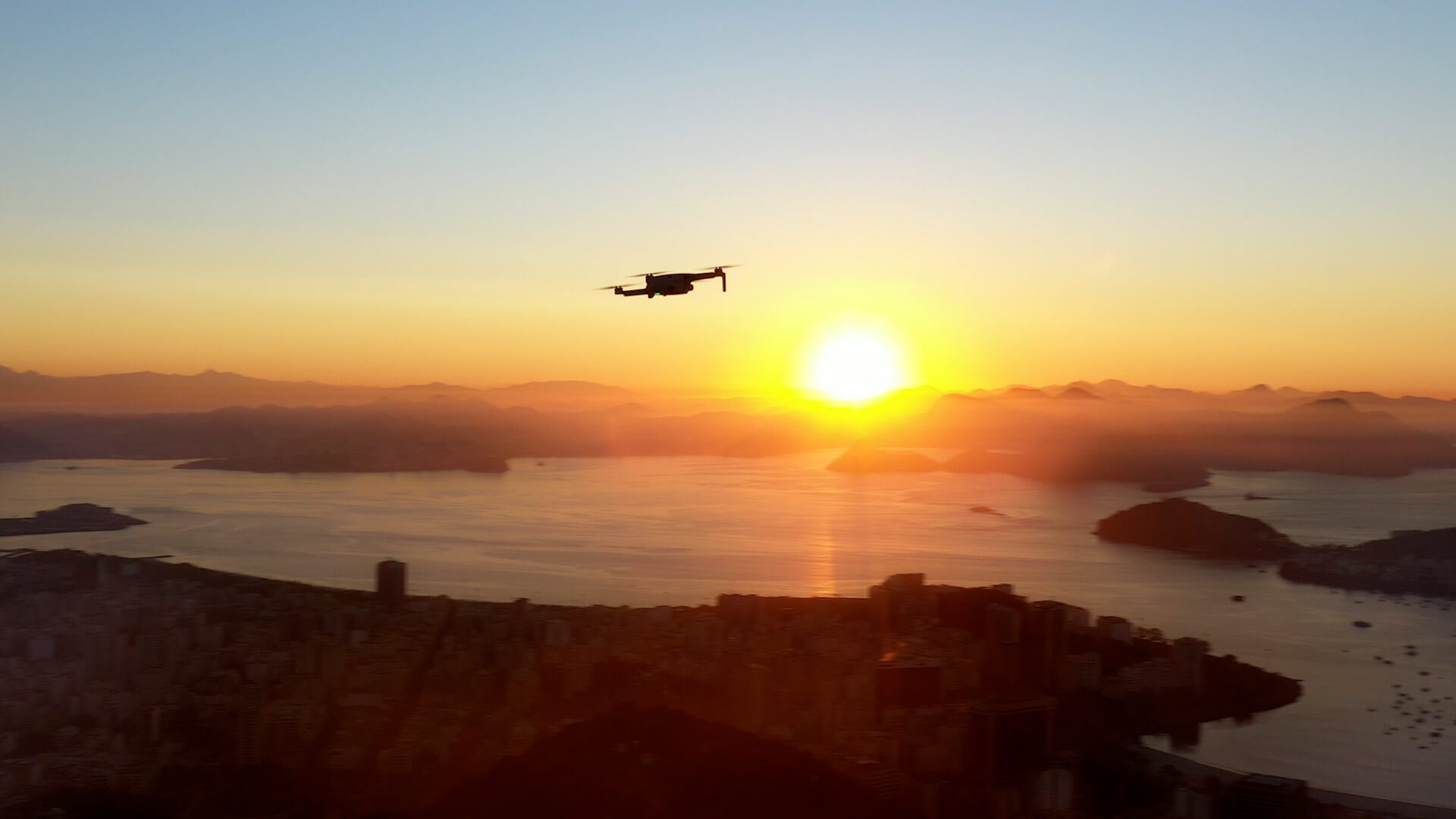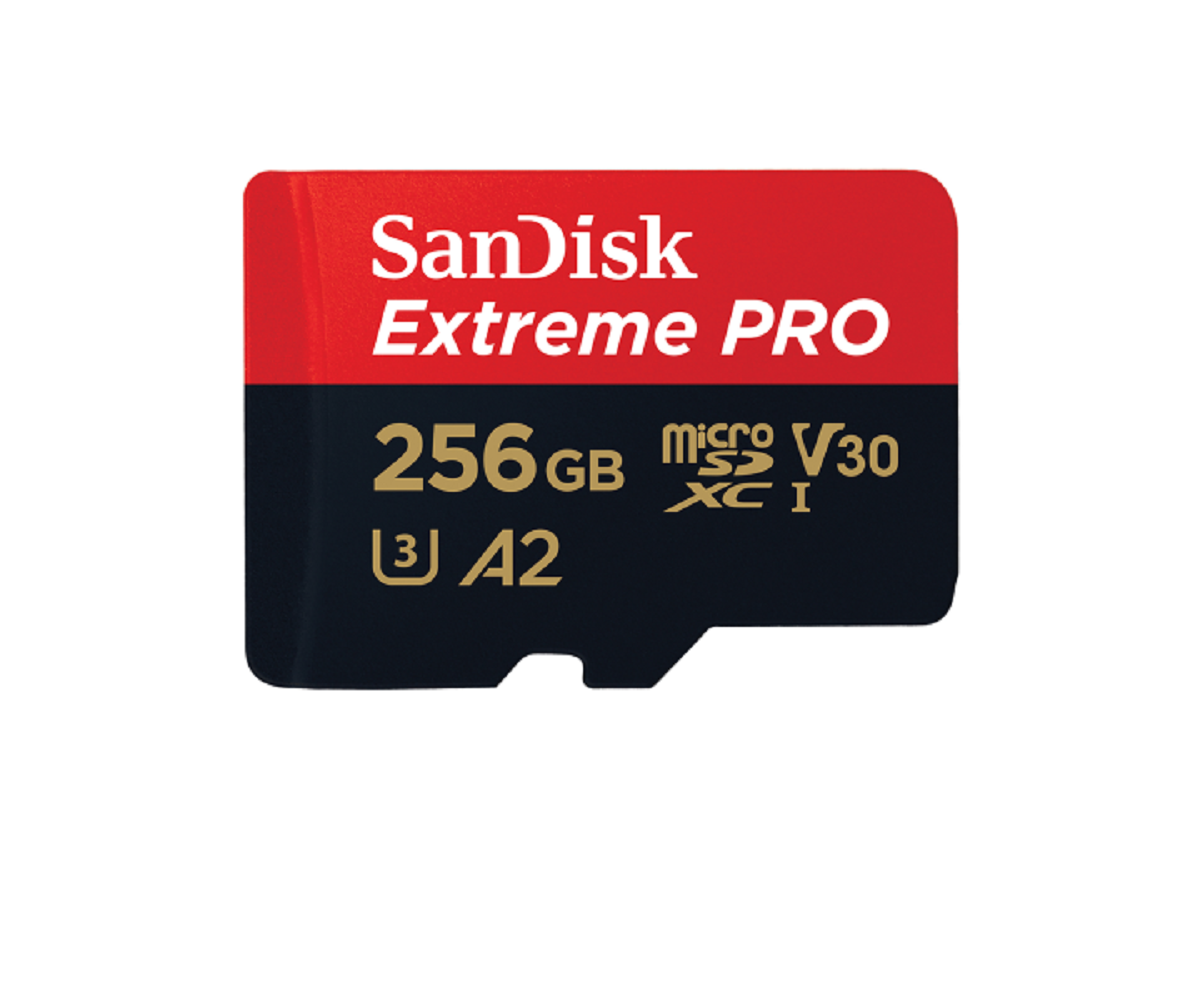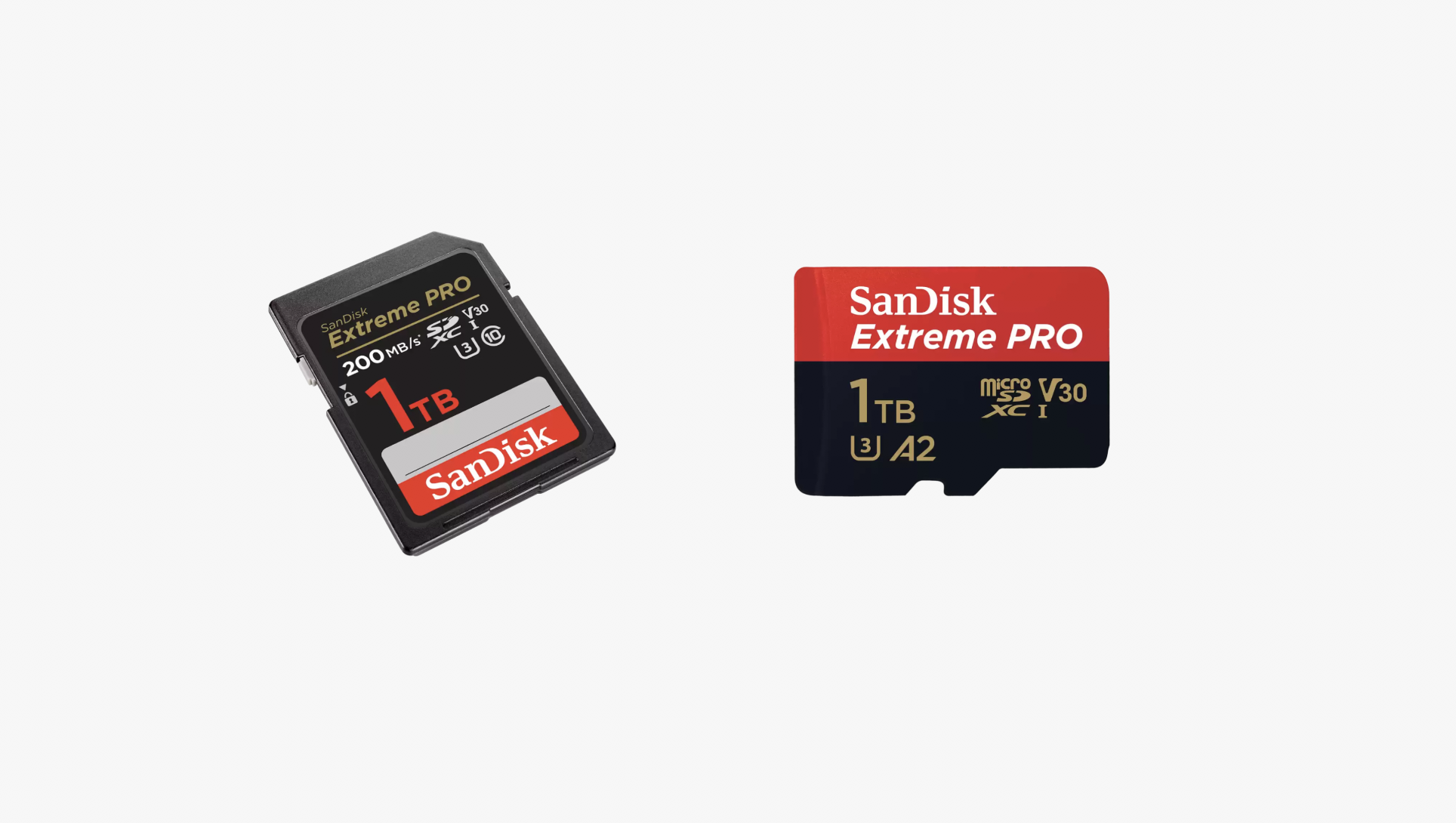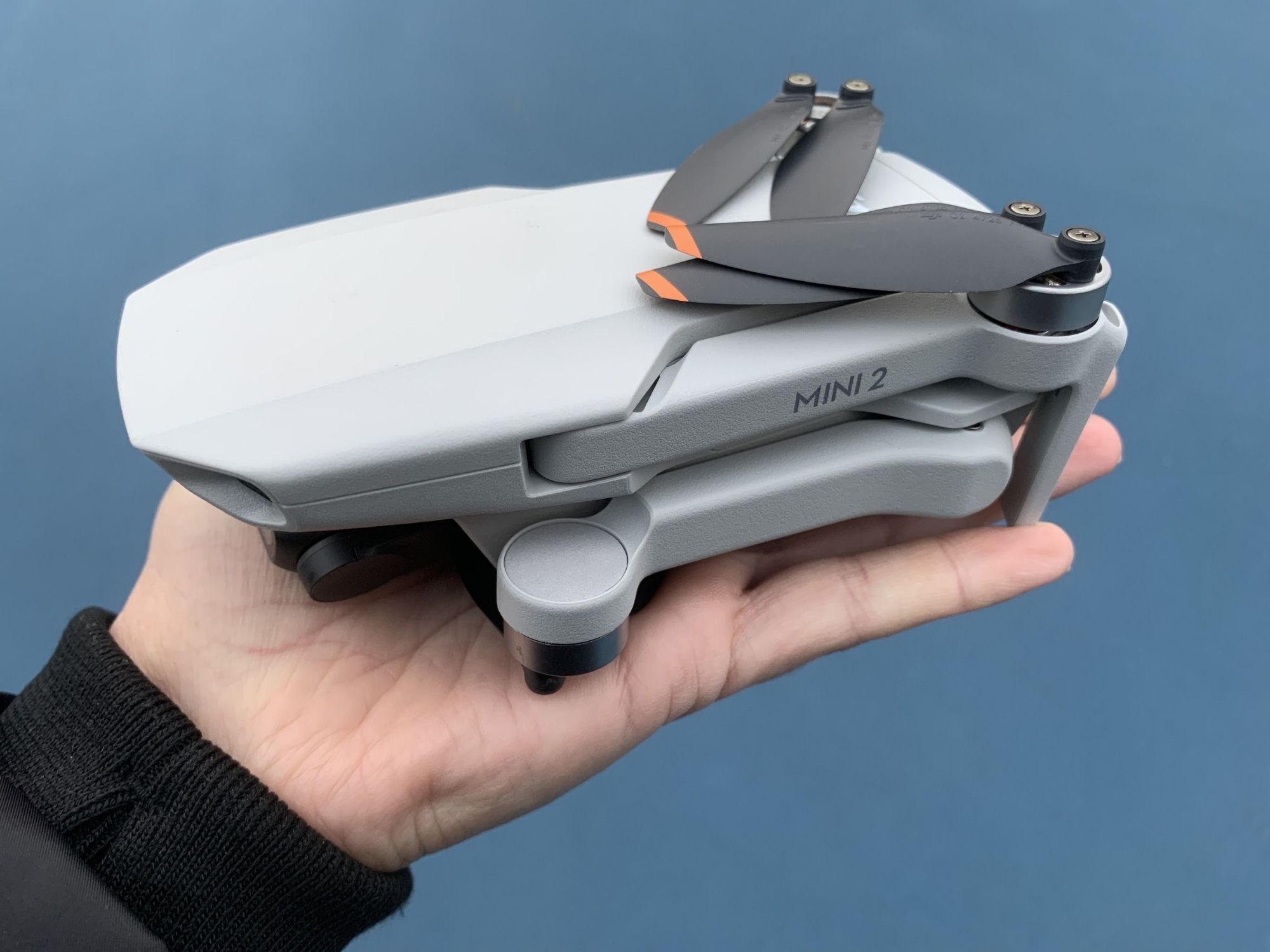Introduction
Welcome to our guide on the SD card compatibility of the DJI Mini 3 Pro. If you’re a proud owner of this amazing drone, you’ll need to know the type of SD card that is compatible with it. Having the right SD card ensures smooth operation and allows you to capture stunning aerial footage without any interruptions or compatibility issues.
As you may be aware, the SD card serves as the storage medium for your DJI Mini 3 Pro’s photos, videos, and other data. It’s crucial to choose a high-quality and reliable SD card that meets the drone’s requirements to optimize performance and avoid data loss. In this guide, we will discuss the minimum requirements for SD cards, provide recommendations for compatible SD cards, and share helpful tips for formatting and troubleshooting common issues related to SD cards.
Whether you’re a professional aerial photographer or an enthusiastic hobbyist, understanding the SD card compatibility of the DJI Mini 3 Pro is essential for maximizing its capabilities and ensuring a seamless flying experience. So, let’s dive into the details and find the perfect SD card for your DJI Mini 3 Pro.
SD Card Compatibility
When it comes to SD card compatibility, the DJI Mini 3 Pro supports the use of microSD cards. These miniature cards are widely used in various electronic devices, including digital cameras, smartphones, and of course, drones. The DJI Mini 3 Pro is compatible with microSD cards up to a certain capacity and speed class, which we will discuss in the following sections.
It’s important to note that the DJI Mini 3 Pro does not come with an integrated SD card. Therefore, you’ll need to purchase one separately to store your flight data, photos, and videos. Investing in a high-quality SD card is crucial to ensure the smooth operation of your drone and prevent any potential storage issues.
When choosing an SD card for your DJI Mini 3 Pro, there are two essential factors to consider: capacity and speed class. Let’s delve into each of these considerations to help you make an informed decision.
Capacity:
The DJI Mini 3 Pro supports microSD cards with a capacity of up to 256GB. This storage capacity allows you to capture a significant amount of high-resolution photos and videos before needing to offload the data onto a computer or another storage device. Keep in mind that as you increase the capacity of the SD card, the price may also increase. Therefore, it’s advisable to consider your budget and storage needs when selecting the appropriate capacity.
Speed Class:
The speed class of an SD card indicates its minimum sustained data transfer rate. For optimal performance and smooth video recording, it is recommended to use SD cards with a minimum UHS-I Class 3 (U3) speed rating. This ensures that the SD card can handle the constant flow of data required during drone flights and video recording, minimizing the risk of dropped frames or stuttering footage.
Now that we have covered the SD card compatibility requirements for the DJI Mini 3 Pro let’s move on to the minimum requirements and recommended SD cards for this drone.
Minimum Requirements
To ensure optimal performance and compatibility, the DJI Mini 3 Pro has specific minimum requirements for the SD card you choose. Meeting these requirements will guarantee smooth operation and the best possible experience while using your drone.
Capacity:
The minimum capacity for an SD card to be used with the DJI Mini 3 Pro is 16GB. This capacity allows you to store a decent amount of photos and videos before needing to transfer them to another storage device. However, keep in mind that the 16GB capacity may fill up quickly if you plan on capturing a significant amount of high-quality footage during your flights. If you frequently go on longer flights or want to capture extended video clips, it is recommended to opt for a higher capacity SD card, such as 32GB or 64GB.
Speed Class:
The minimum speed class requirement for the SD card is UHS-I Speed Class 3 (U3). This speed class guarantees a minimum sustained data transfer rate of 30MB/s, supporting smooth recording of high-resolution videos. With a U3 speed class SD card, you can capture stunning aerial footage without worrying about dropped frames or lag.
It’s important to note that while the DJI Mini 3 Pro may work with SD cards that have lower capacities or speed classes, it is highly recommended to meet the minimum requirements to ensure optimal performance and avoid potential issues during your flights.
Now that we have covered the minimum requirements for the SD card, let’s move on to the recommended SD cards for the DJI Mini 3 Pro.
Recommended SD Cards
Choosing the right SD card for your DJI Mini 3 Pro is crucial to ensure smooth operation and reliable data storage. While there are various options available in the market, we have compiled a list of recommended SD cards that offer excellent performance and compatibility with this drone.
SanDisk Extreme Pro:
The SanDisk Extreme Pro series is known for its exceptional performance and reliability. It offers fast read and write speeds, making it ideal for capturing high-resolution photos and videos with the DJI Mini 3 Pro. Available in capacities ranging from 32GB to 256GB, the SanDisk Extreme Pro is a top choice for professional drone photographers and videographers.
Lexar Professional 1000x:
The Lexar Professional 1000x series is a popular choice among drone enthusiasts. It provides fast transfer speeds and supports 4K video recording. With capacities ranging from 32GB to 256GB, this SD card is perfect for capturing stunning aerial footage with the DJI Mini 3 Pro.
Samsung EVO Select:
The Samsung EVO Select is a budget-friendly option that doesn’t compromise on performance. With read and write speeds suitable for 4K video recording, it offers reliable and smooth operation. Available in capacities from 32GB to 512GB, this SD card provides ample space for storing your flight data and media files.
Transcend UHS-II U3:
For users who demand high-speed data transfer, the Transcend UHS-II U3 series is an excellent choice. With blazing-fast read and write speeds, it ensures seamless recording of 4K videos and rapid file transfers. While this series may be pricier compared to other options, its performance is well worth the investment.
Remember, when purchasing an SD card, always ensure that it meets the minimum requirements of the DJI Mini 3 Pro, including capacity and speed class. Additionally, it’s a good practice to buy SD cards from reputable brands to guarantee reliability and performance.
Now that we have explored the recommended SD cards, let’s move on to the important topic of formatting the SD card for optimal usage with the DJI Mini 3 Pro.
Formatting the SD Card
Formatting the SD card is an essential step to ensure optimal performance and compatibility with the DJI Mini 3 Pro. It helps prepare the SD card for storing data and removes any unnecessary files or errors that may hinder smooth operation.
Before formatting the SD card, ensure that you have transferred any important files or data to a secure location, as formatting will erase all the data stored on the card.
Formatting on the DJI Mini 3 Pro:
The DJI Mini 3 Pro provides an option to format the SD card directly within its settings menu. Here’s how you can do it:
- Power on the DJI Mini 3 Pro and connect your mobile device to its remote controller.
- Launch the DJI Fly app on your mobile device and establish a connection with the drone.
- Navigate to the settings menu in the app and locate the option to format the SD card.
- Follow the on-screen prompts to format the SD card. The process may take a few moments.
Formatting the SD card using the DJI Mini 3 Pro’s settings ensures that it is properly formatted for optimal performance with the drone.
Formatting on a Computer:
If you prefer to format the SD card on your computer, you can do so using the appropriate operating system’s formatting tools. Here’s a general guide:
- Insert the SD card into a card reader and connect it to your computer.
- Open ‘My Computer’ (Windows) or ‘Finder’ (Mac) and locate the SD card.
- Right-click on the SD card and select the option to format it.
- Choose the desired file system (FAT32 or exFAT) and allocate unit sizes. It is recommended to use the default settings unless you have specific requirements.
- Click ‘Format’ and wait for the process to complete.
Once the SD card is formatted, it is ready to be used with the DJI Mini 3 Pro. Remember to follow the appropriate safety procedures when removing or inserting the SD card to prevent any physical damage.
Now that we have covered the formatting process, let’s explore some common issues related to SD cards and how to avoid them.
Avoiding Common Issues
While using an SD card with the DJI Mini 3 Pro, you may encounter some common issues. However, with proper precautions and maintenance, you can avoid these issues and ensure a seamless flying experience. Here are some tips to help you prevent common problems:
Use High-Quality and Reliable SD Cards:
Investing in high-quality and reputable SD cards is essential to avoid compatibility issues and data loss. Choose SD cards from trusted brands that are known for their reliability and performance. Avoid using cheap or counterfeit SD cards, as they may not meet the necessary speed requirements and can cause unpredictable issues.
Format the SD Card Regularly:
Regularly formatting the SD card helps maintain its performance and keeps it free from errors. It is recommended to format the SD card before each use to ensure a clean and optimized storage medium. However, remember to backup any important data before performing the format, as it will erase all data on the SD card.
Handle the SD Card with Care:
Proper handling of the SD card is crucial to avoid physical damage. Avoid touching the metal connectors on the card to prevent static electricity discharge. When inserting or removing the SD card, ensure that the DJI Mini 3 Pro is powered off and disconnected from any power source to avoid electrical damage.
Avoid Running out of Storage Space:
Running out of storage space during flights can disrupt your drone experience and may result in data loss. Regularly check the remaining storage capacity on your SD card and transfer files to a separate storage device or computer when necessary. It is better to have ample space available to capture all the breathtaking moments without any interruptions.
Keep the SD Card Clean:
Dust, dirt, and fingerprints can affect the performance of the SD card. It is advisable to keep the SD card clean by using a soft, lint-free cloth to wipe off any debris or smudges. Avoid using harsh chemicals or solvents, as they may damage the SD card. Keeping the SD card clean ensures a reliable connection and reduces the chances of errors.
By following these tips, you can avoid common issues and optimize the performance and longevity of your SD card when using it with the DJI Mini 3 Pro. However, if you do encounter any issues, refer to the troubleshooting tips in the next section to help resolve them.
Troubleshooting Tips
While using an SD card with the DJI Mini 3 Pro, you may occasionally encounter some issues. Here are some troubleshooting tips to help you resolve common problems and ensure a smooth flying experience:
1. Check SD Card Compatibility:
Ensure that the SD card you are using is compatible with the DJI Mini 3 Pro. Verify that it meets the minimum requirements in terms of capacity and speed class. Using an incompatible SD card can lead to issues such as freezing, data loss, or errors during recording.
2. Reformat the SD Card:
If you are experiencing issues with the SD card, try reformatting it. Formatting can resolve file system errors and restore the SD card to its optimal state. Remember to backup any important data before formatting, as it will erase all the data on the card.
3. Update Firmware and Software:
Ensure that your DJI Mini 3 Pro, remote controller, and DJI Fly app are all running the latest firmware and software versions. Updating to the latest versions can address any bugs or compatibility issues that may be affecting the SD card performance.
4. Check for Physical Damage:
Inspect the SD card for any physical damage or dirt that may be obstructing the proper connection. Clean the SD card using a soft, lint-free cloth and ensure that the metal contacts are not scratched or bent. If you notice any significant damage, consider replacing the SD card.
5. Test with a Different SD Card:
If possible, try using a different SD card to see if the issue persists. This will help determine if the problem lies with the SD card or the DJI Mini 3 Pro. If the new SD card works fine, it may indicate that the previous SD card has a compatibility or performance issue.
6. Contact DJI Support:
If you have followed these troubleshooting tips and are still experiencing issues with the SD card, it is advisable to reach out to DJI support for further assistance. They can provide specific troubleshooting steps or guide you on possible solutions for the problem you are facing.
By following these troubleshooting tips, you can address common issues related to the SD card and ensure a smooth and trouble-free experience with your DJI Mini 3 Pro.
Conclusion
In conclusion, selecting the right SD card for your DJI Mini 3 Pro is crucial for optimal performance and reliable data storage. By considering the minimum requirements and recommended SD cards, you can ensure compatibility and capture stunning aerial footage without any interruptions. Remember to choose high-quality and reputable brands to guarantee performance and reliability.
Once you have chosen an SD card, formatting it using the DJI Mini 3 Pro or a computer is essential to prepare it for use with the drone. Regularly formatting the SD card and handling it with care can help maintain its performance and prevent common issues that may arise during flights.
If you encounter any issues with the SD card, following the suggested troubleshooting tips can help resolve common problems and ensure an uninterrupted flying experience. Checking compatibility, reformatting, updating firmware and software, and inspecting for physical damage are some of the steps you can take to troubleshoot SD card-related issues.
We hope this guide has provided you with valuable information on SD card compatibility, minimum requirements, recommended SD cards, formatting, avoiding common issues, and troubleshooting tips for the DJI Mini 3 Pro. By following these guidelines, you can optimize your drone’s performance and enjoy capturing breathtaking aerial moments to their fullest potential.







